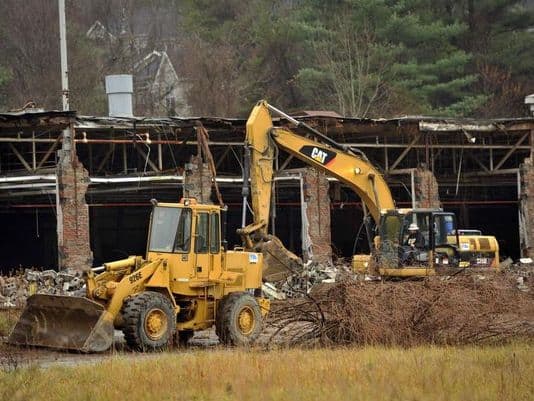
The CTS Corp. manufacturing plant that was shut down about three decades ago likely left serious soil and groundwater contamination, according to a lawsuit being heard in the Supreme Court this month. Residents near the Mills Gap Road plant site in North Carolina began noticing an oily substance leaking into an area spring basin as […]
 The CTS Corp. manufacturing plant that was shut down about three decades ago likely left serious soil and groundwater contamination, according to a lawsuit being heard in the Supreme Court this month.
The CTS Corp. manufacturing plant that was shut down about three decades ago likely left serious soil and groundwater contamination, according to a lawsuit being heard in the Supreme Court this month.
Residents near the Mills Gap Road plant site in North Carolina began noticing an oily substance leaking into an area spring basin as far back as 1999, wrote Citizen-Times. Now, lawyers feel that the lawsuit may have a broader reach, particularly for the thousands of Marines and their families who had been stationed at Camp Lejeune, and other alleged victims of exposure to hidden toxins, according to Citizen-Times. It is the time lapse between when the plant closed and the contamination became apparent in this lawsuit brought against CTS Corp. by 25 Buncombe County property owners that is significant.
A North Carolina law that involves a 10-year “statute of repose” imposes a filing deadline for those claims that are associated with environmental pollution when real property is involved; this, despite that victims may not know about the contamination until beyond that time limit, the Citizen-Times reported. The court will now consider if the federal Comprehensive Environmental Response, Compensation and Liability Act, which Congress passed in 1980, preempts the North Carolina statute. The law was put in place to help victims secure additional time to file claims after they discover what caused their alleged injuries.
CTS manufactured industrial switches and resistors at the now-shuttered location for decades, using chemicals there that include the industrial solvent trichloroethylene (TCE). TCE has been detected in very high concentrations in area soil and groundwater, at levels of 21,000 parts per billion (ppb) at a spring next to the plant, for instance, according to Citizen-Times. This level is more than 7,000 times the TCE groundwater standard in North Carolina. Other chemicals, including benzene, xylene, and toluene, were also detected.
Those living in Buncombe County have long been asking for cleanup of the site and continue to allege that they suffer from an array of health problems, such as cancer, that are associated with the CTS location. What’s worse is that officials believe the contamination is spreading. According to the Citizen-Times report, TCE has been detected in four wells in a nearby sub-division.
Last year, a large study found that TCE was associated with increased risks for developing liver and other cancers and also found that Scandinavian workers who were exposed to TCE suffered from increased risks for liver, kidney, and cervix cancers, according to a prior Reuters Health report. Earlier research also revealed that TCE causes cancer in animals when inhaled or absorbed through the skin in large quantities. Meanwhile, the World Health Organization (WHO) designated TCE a human carcinogen in October 2012 and indicated that TCE has connections to kidney cancer; however, prior studies suggest that TCE is also associated with liver, kidney, cervical, and esophageal cancer and non-Hodgkin lymphoma. Increased risks for Parkinson’s disease have been associated with TCE, as well.
TCE, which may be inhaled or absorbed through the skin, was banned in the food and pharmaceutical industries in most areas of the world the 1970s. Later, in 1997, TCE was banned as an anesthetic, skin disinfectant, grain fumigant, and coffee decaffeinater in the United States. Prior to its ban, TCE was used in paints, glue, carpet cleaners, and dry-cleaning solutions. TCE is widely used in industry to clean machinery and in some etching processes, Reuters wrote previously. In the U.S., the Occupational Safety and Health Administration (OSHA) regulates TCE levels in the workplace as an intermediate step in refrigerant chemical production and as a solvent to clean metal parts, Reuters reported.
TCE drinking and bathing water contamination has been the focus of mounting lawsuits in the U.S.


